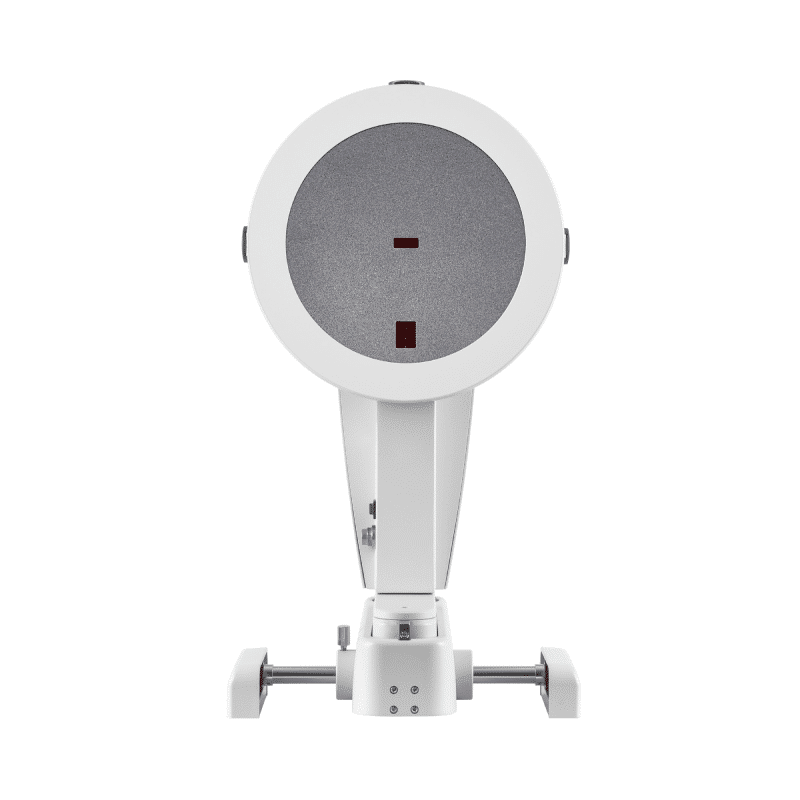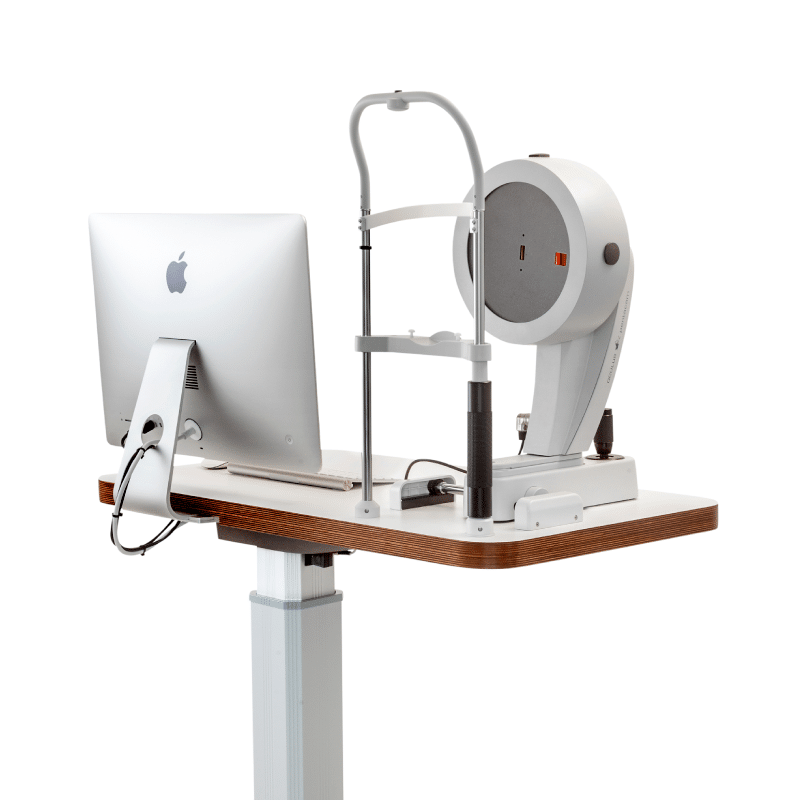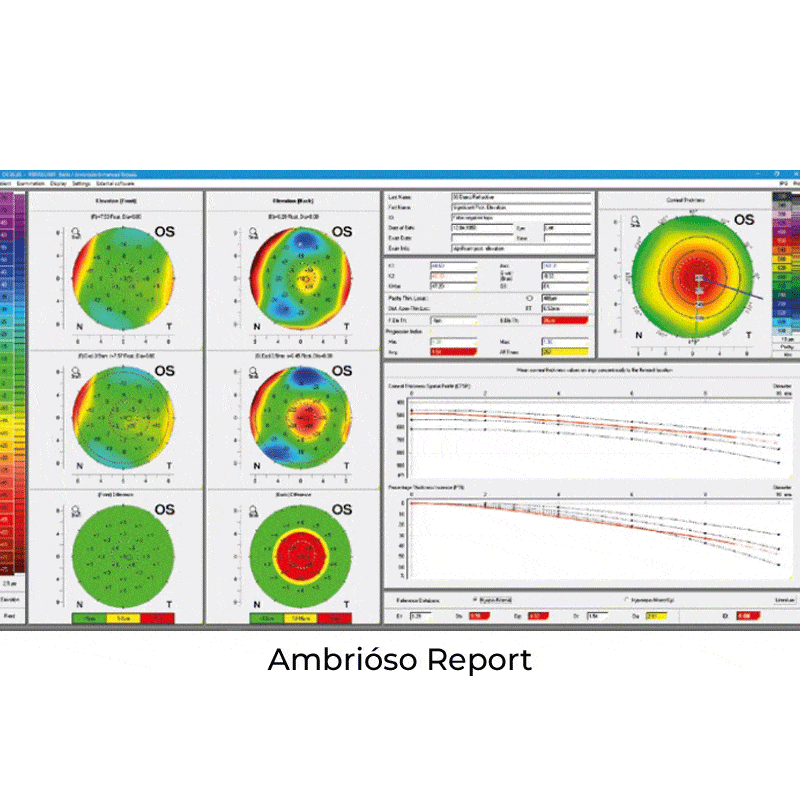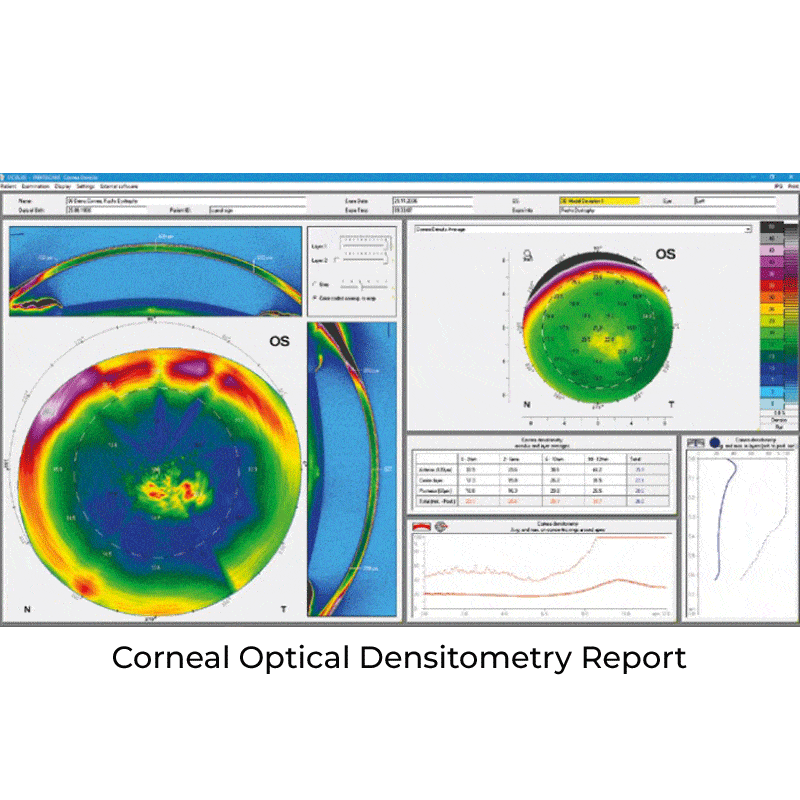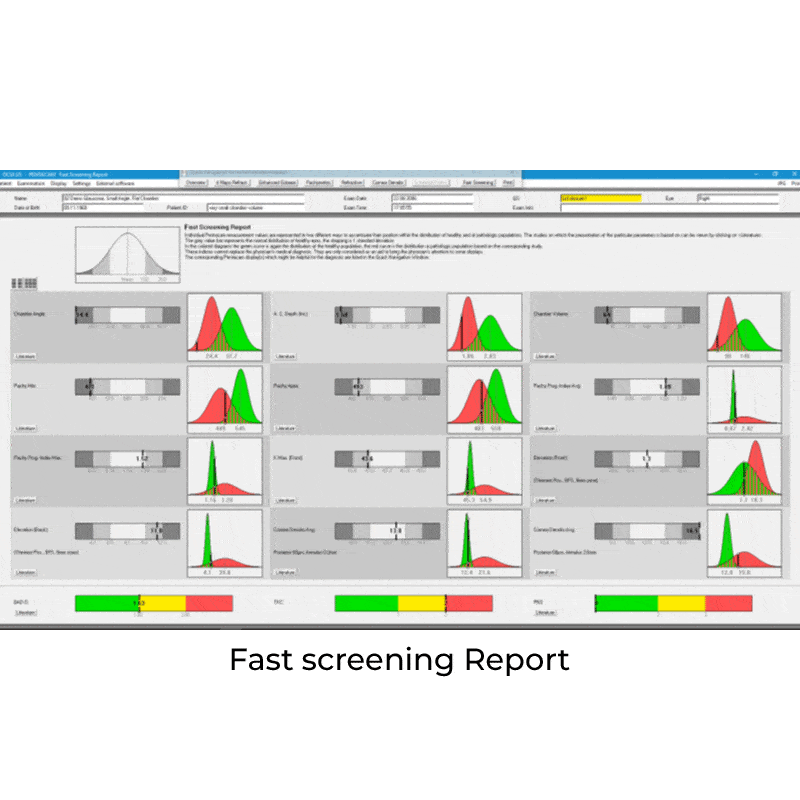The OCULUS Pentacam® measures the entire anterior eye segment independent of tear film. Through high-resolution Scheimpflug images, the OCULUS Pentacam® calculates a motion-corrected 3D model of the anterior segment. It is also equipped with intuitive and user-friendly software features to ensure patient safety.
*OPTIONAL Software Package for Optometric Screening:
- Belin/Ambriósio Display: early detection of corneal irregularities and risk management for refractive surgery.
- Corneal Optical Densitometry: objective analysis of corneal optical densitometry in different layers and zones.
- Show 2 Exams Topometric: for better comparison of two examinations results.
- 4 Maps Selectable: customise your quad map, choose any of the available datasets to present on this screen.
*OPTIONAL More software options:
- CSP Report: Scleral Lens Fitting Guide
- 250 Scheimpflug images covering a diameter of up to 18 mm are taken in the measuring process. All images of a Cornea Scleral Profile (CSP) scan are taken from the same visual axis without the need for eye movement.
Download the OCULUS – Pentacam® Brochure here.
Download the OCULUS – Pentacam® Configuration Brochure here.


